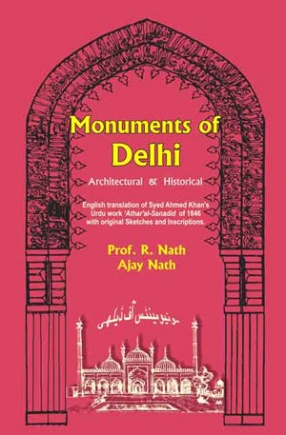
Showing all 16 books

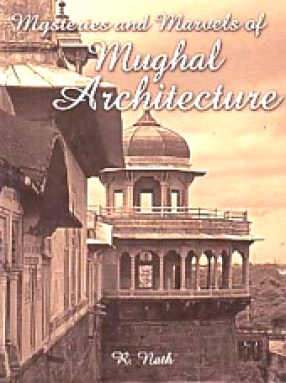

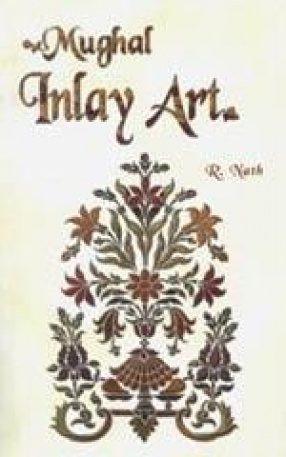



(Sir) Sayyid Ahmad Khan (1817-98), the founder of Aligarh Muslim University, was also a scholar of history. He was greatly interested in the monuments of Delhi, on which subject he authored a work “Athar’al-Sanadid” in Urdu. It contained immensely useful historical and architectural material for the study of the monuments of Delhi, built over a long span of time, from c.1192 to 1846 A.D. Its Arabic and Persian inscriptions were meticulously ...

It studies such distinctive features and monuments of Medieval Indian Architecture as `Chittorgadh Kirtti-Stambha'; `Gujari-Mahal of Gwalior Fort'; `Kushk-Mahal of Chanderi'; `Design of the Tombs of Sasaram'; `Navgraha' (Nine-House) Plan of Mughal Buildings; `Meaning and Purpose of Minar'; `Fauna and Flora'; `Kashikari' (art of glazed-tiling); and temples of Sri-Govinda-Devaji. They belong to different architectural styles and ...

Entitled as it is, it deals with the mysteries and marvels of Mughal Architecture which the author came across during his study of this subject, for nearly half a century. The various aspects of Mughal architecture are uncommon and unique, and are not present in any other architecture. They are simply wonderful. They evoke innocent curiosity and make their history more interesting than fiction. In all, 155 plates (including digital images), 84 figures (drawing of ...


Entitled as it is, this work ventures to study, historically and stylistically, the monuments of Fatehpur Sikri (e.g. mosques, tombs, residential palaces, administrative mansions and offices, gateways, minar, garden, bazar, dam, baolis and hammams which except for a few, commissioned by Babur between 1527 and 1529 A.D., were built during the reign of Akbar, the Great, who ruled from 1556 to 1605. He was a rare genius, the like of whom appear only once in a ...
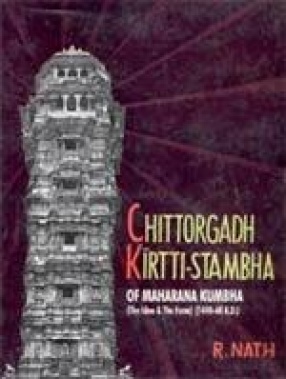
Maharana Kumbha of Mewar, who was the preceptor of medieval Indian renaissance, built his greatest monument, the Kirttistambha in the fort of Chittorgadh (Rajasthan) between 1440 and 1460 A.D. It is generally known by the misnomer 'Vijaya-Stambha' (The tower of victory), though it was not built to commemorate a military event. The author has examined here the fundamental question: what was the 'idea' which led to its incarnation in such a beautiful 'form', under ...

The book studies 'INLAY' art as it developed in Mughal Architecture indigenously, from Humayun to Shah Jehan (c. 1535 to 1658 AD), landmark examples of which have been illustrated. Mughal inlay is architectural, and it is a misnomer to brand it: 'pietra-dura' which was Florentine picture-art used on wooden furniture. 'Orpheus Plaques' which led the colonial historians to trace origin of Mughal inlay to Florrence, were imported ready-made and there is no other ...
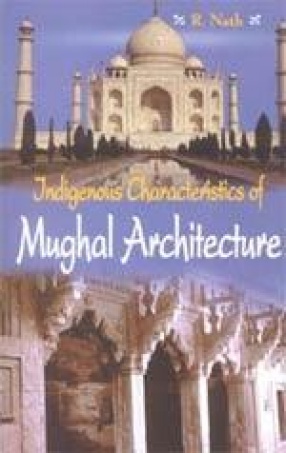
It deals, extremely briefly, with the evolutionary process of Mughal Architecture, practically from Babur to Shah Jehan (1526 to 1658 AD). Instead of being an exotic phenomenon, as it is largely misunderstood, Mughal Architecture, like the Gupta art, was deeply rooted in the soil and it grew and developed not only on indigenous forms and techniques, but also on its concepts, customs and beliefs. It was owing to the decisive participation of native sources, in its ...

This is part 1 of Vol. IV of the multi-volume series: History of Mughal Architecture, three volumes of which have already been published. This volume deals with Shah Jehan’s age of ‘Architectural Aestheticism’ (1628-1658 A.D.) and its representative monuments, some of which mark the zenith of the style. This part has seven chapters. Sources of the history of this period have been enumerated in Chapters 1. The second chapter deals with ‘Shah Jehan and His ...

This is an anthology of papers on Medieval Indian Architecture, covering some of its main themes and the period from 1192 to 1803 AD. It includes the study of such important monuments as the Qutb Minar Delhi; the tomb of Muhammad bin Tughlaq in the Dar’ul-Aman, Delhi; the Begumpuri and Four-quartered mosques of Delhi; the Iwan mosques of Jaunpur, the gateways of Chanderi and the tombs of Sasaram, as also such typical ornamental designs as ‘arabesques’ and ...


This is a precise account of the Taj Mahal (1631-48 A.D.) which marks the perfect moment in the evolution of the Mughal Architecture of India and which is, in fact, the most beautiful monument of the medieval period. Though a vast subject, it has been dealt with here extremely briefly, covering such essential aspects of its history and architecture as the origin of its idea and design; selection of the site and land; engagement of builders and procurement of ...

This book deals with Agra, its history from the earliest times to 1803, and its monuments which have been studied and described with the help of 5 maps, 64 text figures of plans and sections, and 247 black-and-white plates. The subject has been covered and illustrated comprehensively (more than 60 buildings), and attempt has been made to make it encyclopaedic. The first chapter is devoted to the history of Agra. The second one makes a stylistic assessment of the ...

This is study of stone sculptures of birds, beasts, mythical animals, human beings and deities in Mughal architecture. This is the first book on this new subject which, though these sculptures were all the time there, had been consistently overlooked owing primarily to the fact that a life-time's experience of this discipline was needed to take it up. Some masterpieces of Mughal sculpture were produced during the age from Babur to Jehangir (c. 1522 to 1627 A.D.). ...

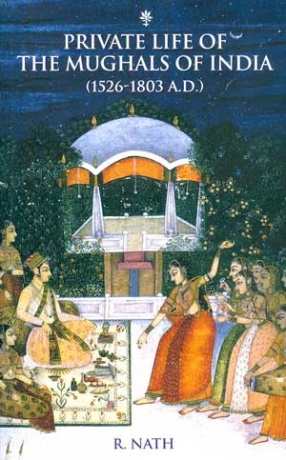
Titled as it is, the book deals with the little known, but much scandalized, private life of the Mughals who ruled from 1526, practically to 1803 when the British captured Delhi and Agra, their nerve-centres, from them. This included the period of the reign of three great Mughals, viz. Akbar (1556-1605), Jehangir (1505-27) and Shah Jehan (1628-58), of little more than a century. They possessed not only fabulous wealth, but also the vision to found a ...
